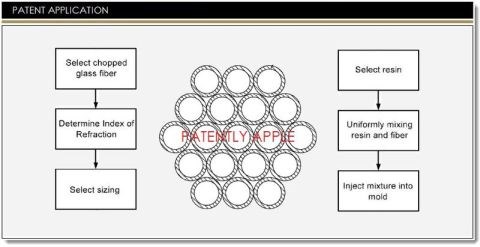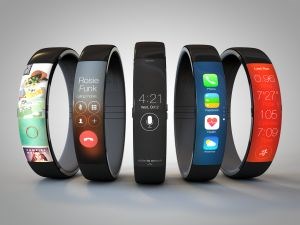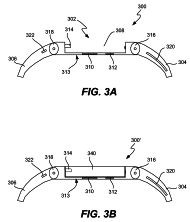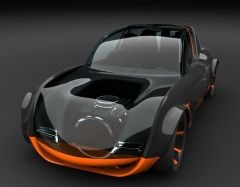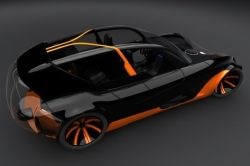Transparent composites
What does Apple see that might provide opportunity for future composites?
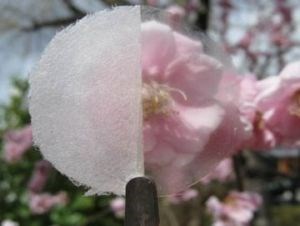
On January 30, 2014, the U.S. Patent & Trademark Office published a patent application from Apple titled "Transparent Fiber Composite."
SOURCE: www.patentlyapple.com
I was intrigued when I ran across ’s posting, . The site relates that Apple Inc. (Cupertino, Calif., USA) has been experimenting with composites since 2007, and has now invented a method for manufacturing relatively transparent fiber reinforced plastic structures.
Interestingly, Mo-Sci Corp. (Rolla, Mo., USA) received a 2007 SBIR research funding award for , which describes “a need for mechanically strong composite materials of high optical quality and transparency equivalent to window glass” and achieving this “by layering a polymer matrix reinforced with glass ribbons (micron-size glass fibers with rectangular cross section) and a tough compliant polyurethane film.” Apparently Mo-Sci had already licensed technology from U.S. Patent 5,665,450 awarded to the University of Missouri and produced research quantities of glass ribbon-reinforced epoxy for high-strength window applications. The patent shows the technology’s foundation of prior art and accompanying issues, which include difficulty in matching the refractive index of materials due to variations with temperature. The Army Research Lab report, specifically noted that “index-matched systems are transparent only over a narrow temperature range.”
In its application US 20140030522 A1, Apple describes matching the refractive index of the glass fiber, the sizing applied to the fiber and the resin matrix which the fiber reinforces so that the difference between them is less than .005. It also describes forming a transparent fiber-resin composite by injection molding chopped glass fibers ranging in length from 0.25 to 0.50 inch (6 to 13 mm), which can be mixed into the resin prior to injection. This method is said to enable high volume production and even distribution of the fibers in the resin. The patent does NOT disclose how Apple has overcome the RI matching challenges faced by previous developers.
A search on “transparent composites” reveals many different approaches, including bacterial nanofibers, plant nanofibers, chitin particles and polymer nanofibers, and fibers made from polymer ribbons. Transparent composites have also been made using from nylon and polyacrylonitrile (PAN), the common precursor for carbon fiber). The nylon is embedded into an epoxy matrix and the PAN into poly methyl methacrylate (PMMA). Applications claimed include protective armor and aircraft windows.
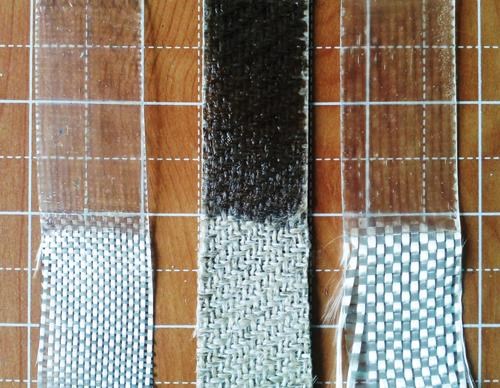
The high crystallinity of the BioMid fiber makes it more transparent than other natural fibers. SOURCE: June 2013 CT article, “Bio-composites update: Beyond eco-branding”
The RI issue may have been solved through research at Kyoto University (Kyoto, Japan). Led by professor Hiroyuki Yano, transparent nanocomposites were produced by mixing chitin particles (long-chain polymers that form insect, arachnid and crustacean exoskeletons) with acrylic resin and impregnating pulp fibers to form a composite sheet. The resulting composite showed optical transmittance over a wide temperature range.

Pulp fiber sheet before (left) and after impregnation with chitin-modified acrylic resin.
SOURCE: Hiroyuki Yano, Fumiaki Nakatsubo and Kentaro Abe, Kyoto University.
Where do we go from here? Patently Apple asserts that this technology could be applicable in both wearable computers (e.g., the iWatch) as well as integration into other products like sporting goods. In its patent, Apple says clear composites can enable lightweight, strong housings that integrate displays and even camera lenses. That almost implies a multifunctionality that would cut the number of materials and manufacturing steps used in idevice production.
Left: iWatch concept by Todd Hamilton
Right: Images from U.S. Patent US8787006 B2 awarded to Apple,
showing a sensor-packed strap as a dock for various snap in-place modules.
Multifunctionality makes me think of Airbus’ vision for the airliner of 2050, where a futuristic fuselage utilizes topology optimized advanced materials which also provide optical transparency. Though the Airbus images are clearly meant to push boundaries (I’m not convinced being able to see through the fuselage of a commercial airliner is a good idea), what if transparent composites with properties in the range of today’s carbon fiber laminates were possible? And offered selective electrical conductivity and integrated sensors? Solar cells have already been made using transparent graphene electrodes.

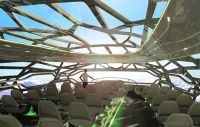
Airbus believes future aircraft could be built using a structure that mimics the bones of birds — light, strong and carrying load only where necessary, leaving space for oversized windows and doors, or alternatively, transparent composite laminates. SOURCE: Airbus
Concept cars are also anticipating what might be possible. For example, the GammaConcept claims to use advanced materials as a basis to develop a new visual language, featuring transparent areas to show underlying structure and engine parts. Though this concept uses polycarbonate, perhaps the next generation will opt for transparent composites.
The GammaConcept features large transparent areas, currently achieved with polycarbonate, glued to a glued onto a carbon and Kevlar fiber-reinforced aluminum chassis. SOURCE: Behance.net
Related Content
NREL develops biomass-derived resin PECAN for wind blades
Demonstration and findings validate PECAN as a method for developing long blades that perform well with composites, outperform some resins and enable chemical recycling.
Read MoreSuper Resin Inc. highlights plant-based epoxy resin, foam core
Eco-friendly resin system using glycol lignin offers an eco-friendly option for CFRP structures and components, and core materials.
Read MorePUR composite sandwich panels for 3D automotive parts, high-volume panels and more
At its U.S. sites, Ascorium produces glass fiber/PUR 3D parts via semi-automated molding, high-volume flat panels via a continuous line while working toward bio-based PUR and recycling.
Read MoreEvolving natural fiber technology to meet industry sustainability needs
From flax fiber composite boats to RV exterior panels to a circularity model with partnerships in various end markets, Greenboats strives toward its biomaterials and sustainable composites vision in an ever-changing market.
Read MoreRead Next
Ultrasonic welding for in-space manufacturing of CFRTP
Agile Ultrasonics and NASA trial robotic-compatible carbon fiber-reinforced thermoplastic ultrasonic welding technology for space structures.
Read MoreScaling up, optimizing the flax fiber composite camper
Greenlander’s Sherpa RV cab, which is largely constructed from flax fiber/bio-epoxy sandwich panels, nears commercial production readiness and next-generation scale-up.
Read MoreCutting 100 pounds, certification time for the X-59 nose cone
Swift Engineering used HyperX software to remove 100 pounds from 38-foot graphite/epoxy cored nose cone for X-59 supersonic aircraft.
Read More



